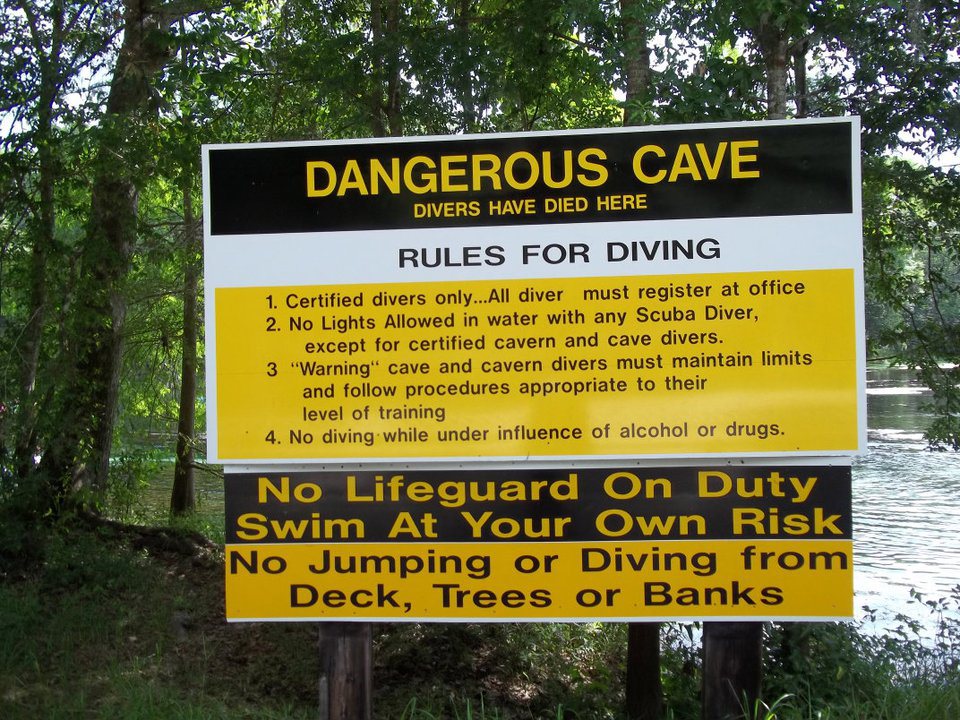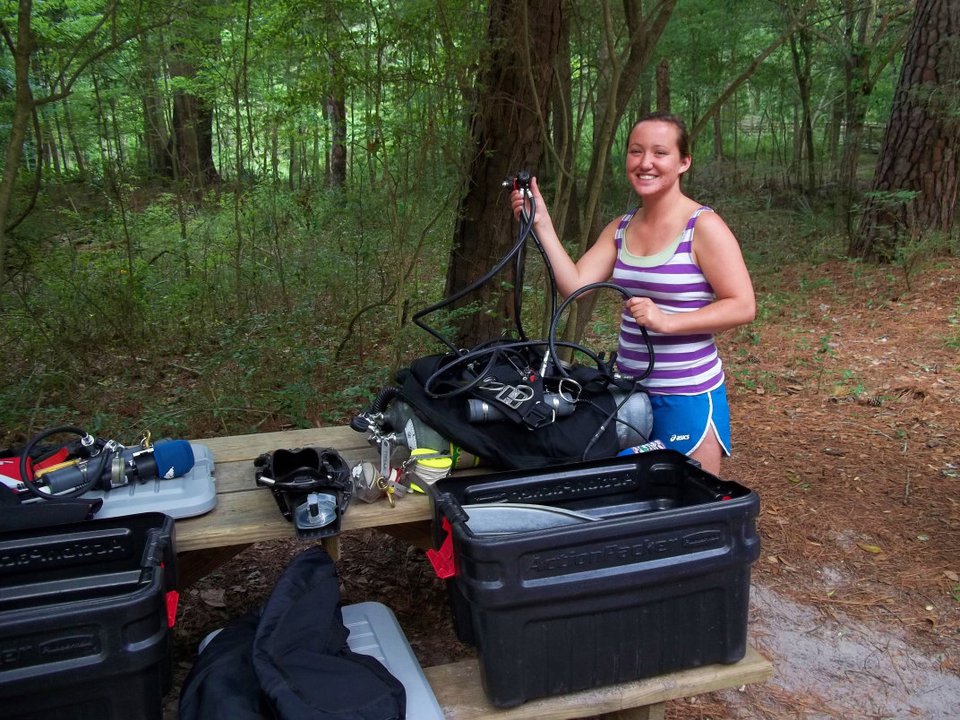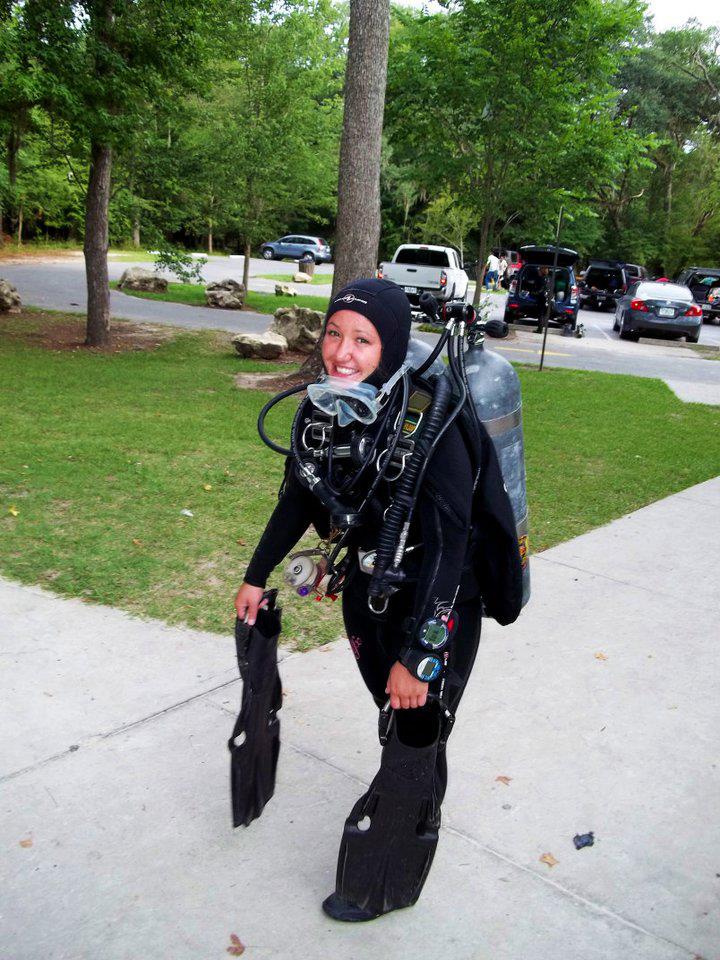Ever since I was a small child, I’ve daydreamed about discovering unknown places. My brother and I spent hours playing in the woods, pretending to map uncharted territory. I dug around underneath patios, searching for evidence of prehistoric life. The idea that I might recover something from the past or go somewhere humans had not been enthralled me even then, as now. Cave diving fit the bill nicely.

Partially because of this desire, I started scuba diving in 2009, and I haven’t stopped training since — my drive to explore has only increased. Shortly after earning my instructor certification, I realized I’m quite comfortable in high-stress diving conditions, including zero visibility, high surge and in carrying the responsibility for my students’ safety.
Preparation
The natural progression for me, after becoming an instructor, was to begin mental preparation for cave diving and to find a great instructor who matched my learning style. I contacted Grant Graves, an accomplished cave diver and free diver. To gain a better perspective on cave diving, he suggested I read about the Floridian aquifer and top pioneer divers. He also gave me the list of manuals required for training. I told Grant that I wanted more than an NSS/CDS full-cave certification card; I wanted to learn how to stay safe in overhead environments and to train for exploration purposes. So he introduced me to Terrence N. Tysall — known as TNT — and the Cambrian Foundation.
TNT trains his students as thought they’re going to be on his exploration team, laying lines in fresh caves, as well as showing them how to deal with situations that can arise before, during and after a cave dive. After reading chapters written by some of TNT’s close friends, I called him nearly every day to ask more questions — how could I physically prepare for his training in San Diego? What was the best way to assemble my tech setup? Why were there still cave diving fatalities?
Terrence referred me back to Grant Graves to physically prepare for diving in overhead environments. We practiced in a three to 11-foot pool, where I was introduced to Precision Diving and the buoyancy and fin techniques I’d need to avoid a silt-out. In the pool, I fixed any buoyancy issues and perfected my modified frog kick. I practiced the PD breathing and kicking techniques on my living room floor for hours until I got it right.
Equipment
As for my equipment, TNT reassured me that he could provide any gear I needed for training. I brought all my recreational diving gear anyway and I hoped that we could modify it for cave diving. Unfortunately, TNT spent the first two days teaching us layman repairs and reconfiguring our kits. The following actions may seem tedious, but they put me in control of my dive.
- Assemble two LP steel cylinders for doubles, verify that tanks are safe and analyze all gas mixes.
- Eliminate unnecessary accessories, hoses and covers that can hide or cause potential failures.
- Test and verify that all life-support equipment is functioning properly. This also means double-checking computers, reels, cutting devices, lights and clips.
- Make sure equipment is as streamlined as possible. All backups must be easy to access. If a piece of equipment could cause entanglement or, fix it now.
- Demonstrate the most energy efficient way to don, remove and transfer gear.
- Practice diving your setup in the pool. Verify that everything is functioning in shallow water.
- Complete the equipment-operational checklist, also known as the touch checklist. This is when you physically touch each item on the list after it has been placed in the vehicle going to the dive site.
Finally I felt mentally and physically prepared for cave training. Terrence taught us far more than what was required for the course, he showed us how to behave and reminded us that no diver is invincible. Speaking your mind and trusting your gut was appreciated and expected. He referred to paranoia as “chattering monkeys” and if they were present, divers were not to enter the water. There was always another day to dive, and any diver could call the dive at any time, for any reason.
Now, when my open-water students show interest in cave diving, I share what I’ve learned with them. I remind them to look for the right instructor and to be patient. Stick to your training and don’t go into a cave unless you’ve received the training to do so. Once you’ve earned it, that’s when discovery truly becomes fun.



